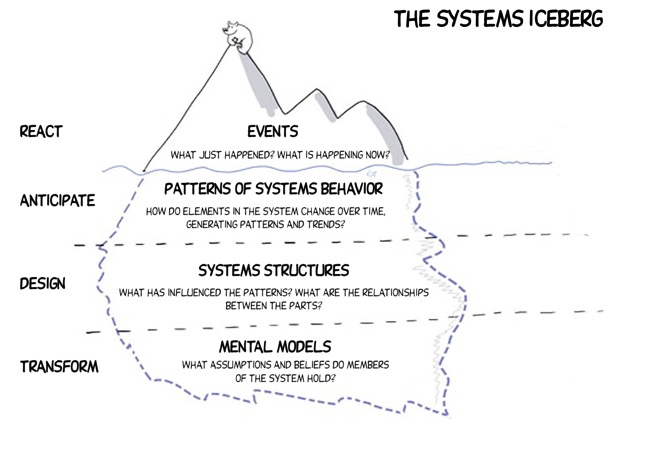Hi! My name is Jan Noga and I am the owner of Pathfinder Evaluation and Consulting in Cincinnati, Ohio. I’m also a long-time member of the Systems TIG and user of systems thinking in my evaluation practice.
A systems perspective for evaluation provides incredible insight into the “how” and “why” of program outcomes, generating rich descriptions of complex, interconnected situations that help stakeholders and clients build a deeper understanding and inform choices for subsequent action. But, as much as we all might intuitively understand that we live in an interconnected world of multiple perspectives, agents, and boundaries, it can be challenging to get clients, stakeholders, and even other evaluators on board with using a systems approach to evaluation.
Why is this always so hard? I find a good deal of the resistance I encounter springs from the perception that systems theory and systems thinking are highly technical, specialized fields that are difficult to learn and to use. I say “systems” and folks immediately think “more complicated than we need” or “lots of math” or “expensive.”
The notion of systems thinking is intimidating for the uninitiated, but that doesn’t mean you should give up on using systems to inform your evaluation. What it does mean is learning how to “talk systems” in ways that are approachable, understandable, and well within the comfort zone of clients, stakeholders, and evaluation partners.
Hot Tip: Start with the familiar. You don’t have to come into an evaluation armed with an entirely new language or a raft of new tools drawn from the systems field. Instead, think about how you can use systems thinking to inform the design of the survey, observation, or interview you were going to do anyway in a way. Many systems approaches are highly usable and lend themselves well to integration into an overall data collection plan without you ever having to use the term “systems.”
Rad Resource: The Systems Thinking Playbook by Linda Booth Sweeney and Dennis Meadows and Systems Concepts in Action: A Practitioner’s Toolkit by Bob Williams and Richard Hummelbrunner are rich sources of strategies and concepts for integrating a systems perspective into your evaluation design.
Hot Tip: Graphic organizers can go a long way toward easing resistance to the notion of systems in evaluation. Rich pictures, maps, process graphics, even non-linear logic models can all help illustrate systems thinking concepts in a way that is non-intimidating and friendly. But, don’t go crazy, either. Simple and easy to follow are critical.
Rad Resource: A good example of a user-friendly model and graphic is the systems thinking iceberg. An excellent description of this model can be found here. When using this with clients, take out the word “systems” and you’ll be ready to go!
The American Evaluation Association is celebrating this week with our colleagues in the Systems in Evaluation Topical Interest Group. The contributions all this week to aea365 come from our Systems in Evaluation TIG members. Do you have questions, concerns, kudos, or content to extend this aea365 contribution? Please add them in the comments section for this post on the aea365 webpage so that we may enrich our community of practice. Would you like to submit an aea365 Tip? Please send a note of interest to aea365@eval.org. aea365 is sponsored by the American Evaluation Association and provides a Tip-a-Day by and for evaluators.

